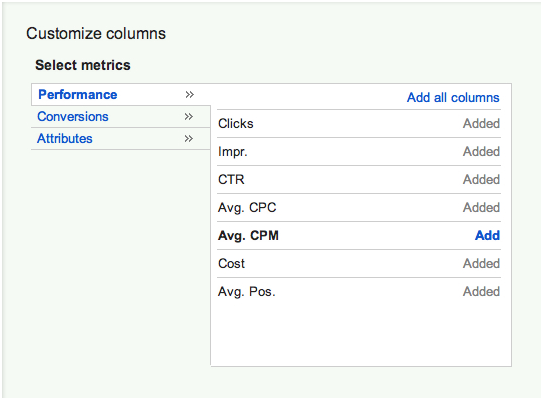 I’m psyched to be attending my 10th SES next week. It’s a great time to catch up with friends, connect with experts, and learn about the latest and greatest in the industry. It’s also the time I get stopped in the expo hall the most and asked to do on-the-fly PPC account audits.
I’m psyched to be attending my 10th SES next week. It’s a great time to catch up with friends, connect with experts, and learn about the latest and greatest in the industry. It’s also the time I get stopped in the expo hall the most and asked to do on-the-fly PPC account audits.
Despite that, I’ve never missed any of the special networking events. My secret? A quick and effective way to audit PPC accounts that only takes 5 minutes… and I’m willing to share it.
1. Account History
- What it is: As you’ve probably guessed, your account history will reveal the changes you’ve made to your PPC account over a specified period of time.
- What it affects: It doesn’t directly affect anything, but it’s useful in situations where you’ve sub/unconsciously done something that generated amazing results, or the extreme opposite of that.
- Where to find it: Tools & Analysis > Change History. You can then set the specific date range you want and choose whether you want to see changes on the account or campaign levels. Make sure you aren’t only checking changes for that time period, but that you are comparing to previous periods as well. Compare 30, 90, and 120 days.

- Why you should care: Because unlike your Ronco grill, PPC management isn’t a “set it & forget it.” Searchers are becoming smarter and competition is getting fiercer. If you want to perform well, you need to constantly tweak and improve your account.
2. Impression Share
- What it is: Impression Share is the ratio of how many impressions you received compared to the total number of impressions you were eligible to receive. In essence, it shows you how often your ads showed up when searches relevant to them occurred.
- What it affects: Impressions can be lost due to one or more of the following reasons:
- Low budget.
- Low ad rank.
- Keyword Match.
- Where to find it: Impression Share data is available at the campaign and ad group levels. If you don’t see Impression Share by default, click on Campaigns > Columns, Competitive Metrics > Imp. Share Add > Save.

- Why you should care: Because if your ads aren’t showing, no one can click them.
3. Quality Score
- What it is: Quality score is a measure of how relevant your ads, keywords, and landing pages are to the searcher. Factors taken into account when quality score is calculated include click-through rate (CTR), account history, landing page quality, and device targeting to name a few.
- What it affects
- Whether your keywords will be eligible to enter the auction.
- How much your cost-per-click (CPC) will be.
- The position in which your ad will appear on the SERP.
- Where to find it: To see your Quality Score data, click on Campaigns > Keywords > Columns > Attributes > Quality Score Add > Save.

- Why you should care: Because with low quality score (generally lower than 7), you end up paying more than you should and your ads end up in lower positions.
4. Click-through Rate
- What it is: CTR is a ratio of how many times your ad was shown to how many people actually clicked it.
- What it affects:
- Mainly your quality score (see above).
- The relevancy of your ads, which will then decrease their ranking and the frequency at which they are shown.
- Where to find it: You should be able to see CTRs for ads and keywords by default in AdWords. If not, you can add it by clicking on Columns > Customize Columns > CTR Add > Save.

- Why you should care: CTR is a great indication for the general relevancy of your ads. If searchers aren’t finding your ad copy and keywords relevant to their queries, their likelihood of clicking will be extremely low.
5. Ad Testing and Landing Page Optimization
My absolute favorite parts of any PPC campaign. I place a lot of emphasis on them partially because you cannot automate them, but mostly because I care about appearances.
Think about it, no one gets to see any other aspects of your PPC account. Bids, keywords, management tools, and overworked interns are all behind the scenes. Ads and landing pages are the only thing you can show your searcher, so make them count.
Test your ads regularly. If you have sufficient traffic volume or conversions (100/month),you should be able to determine winning ads within 3 weeks.
Each ad (or ad group at the very least) should have a unique landing page that mirrors its messaging and carries the scent through. IT (or business prevention units, as some of us like to call them) are no longer an excuse with all the awesome do-it-yourself landing page testing and optimization tools on the market today.
Summary
If you’ve got 5 minutes to spare, do a quick audit on your account against these metrics to get a good idea of where and why your performance might be suffering, or even just to find areas for improvement. You will never be done managing your PPC account, so make sure you keep measuring and optimizing.
 I’m psyched to be attending my 10th
I’m psyched to be attending my 10th 


